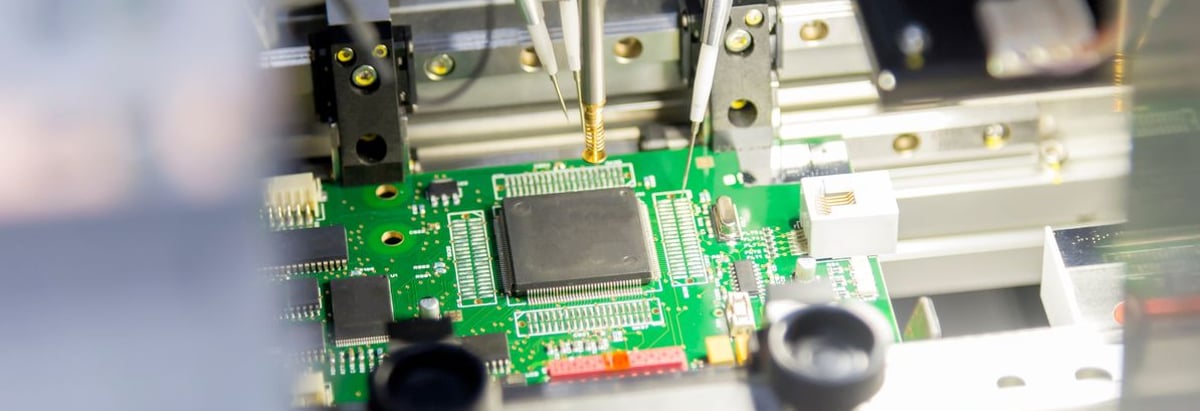Stock Analysis
- South Korea
- /
- Semiconductors
- /
- KOSDAQ:A171090
SUNIC SYSTEM's (KOSDAQ:171090) Returns Have Hit A Wall

If you're looking for a multi-bagger, there's a few things to keep an eye out for. Typically, we'll want to notice a trend of growing return on capital employed (ROCE) and alongside that, an expanding base of capital employed. Basically this means that a company has profitable initiatives that it can continue to reinvest in, which is a trait of a compounding machine. In light of that, when we looked at SUNIC SYSTEM (KOSDAQ:171090) and its ROCE trend, we weren't exactly thrilled.
What Is Return On Capital Employed (ROCE)?
Just to clarify if you're unsure, ROCE is a metric for evaluating how much pre-tax income (in percentage terms) a company earns on the capital invested in its business. To calculate this metric for SUNIC SYSTEM, this is the formula:
Return on Capital Employed = Earnings Before Interest and Tax (EBIT) ÷ (Total Assets - Current Liabilities)
0.11 = ₩9.8b ÷ (₩216b - ₩125b) (Based on the trailing twelve months to June 2024).
So, SUNIC SYSTEM has an ROCE of 11%. On its own, that's a standard return, however it's much better than the 5.4% generated by the Semiconductor industry.
See our latest analysis for SUNIC SYSTEM
Above you can see how the current ROCE for SUNIC SYSTEM compares to its prior returns on capital, but there's only so much you can tell from the past. If you'd like, you can check out the forecasts from the analysts covering SUNIC SYSTEM for free.
What Does the ROCE Trend For SUNIC SYSTEM Tell Us?
Over the past five years, SUNIC SYSTEM's ROCE and capital employed have both remained mostly flat. It's not uncommon to see this when looking at a mature and stable business that isn't re-investing its earnings because it has likely passed that phase of the business cycle. So unless we see a substantial change at SUNIC SYSTEM in terms of ROCE and additional investments being made, we wouldn't hold our breath on it being a multi-bagger.
Another point to note, we noticed the company has increased current liabilities over the last five years. This is intriguing because if current liabilities hadn't increased to 58% of total assets, this reported ROCE would probably be less than11% because total capital employed would be higher.The 11% ROCE could be even lower if current liabilities weren't 58% of total assets, because the the formula would show a larger base of total capital employed. Additionally, this high level of current liabilities isn't ideal because it means the company's suppliers (or short-term creditors) are effectively funding a large portion of the business.
What We Can Learn From SUNIC SYSTEM's ROCE
In summary, SUNIC SYSTEM isn't compounding its earnings but is generating stable returns on the same amount of capital employed. Investors must think there's better things to come because the stock has knocked it out of the park, delivering a 438% gain to shareholders who have held over the last five years. Ultimately, if the underlying trends persist, we wouldn't hold our breath on it being a multi-bagger going forward.
One more thing to note, we've identified 1 warning sign with SUNIC SYSTEM and understanding this should be part of your investment process.
While SUNIC SYSTEM may not currently earn the highest returns, we've compiled a list of companies that currently earn more than 25% return on equity. Check out this free list here.
New: Manage All Your Stock Portfolios in One Place
We've created the ultimate portfolio companion for stock investors, and it's free.
• Connect an unlimited number of Portfolios and see your total in one currency
• Be alerted to new Warning Signs or Risks via email or mobile
• Track the Fair Value of your stocks
Have feedback on this article? Concerned about the content? Get in touch with us directly. Alternatively, email editorial-team (at) simplywallst.com.
This article by Simply Wall St is general in nature. We provide commentary based on historical data and analyst forecasts only using an unbiased methodology and our articles are not intended to be financial advice. It does not constitute a recommendation to buy or sell any stock, and does not take account of your objectives, or your financial situation. We aim to bring you long-term focused analysis driven by fundamental data. Note that our analysis may not factor in the latest price-sensitive company announcements or qualitative material. Simply Wall St has no position in any stocks mentioned.
About KOSDAQ:A171090
SUNIC SYSTEM
Manufactures and sells OELD equipment.

